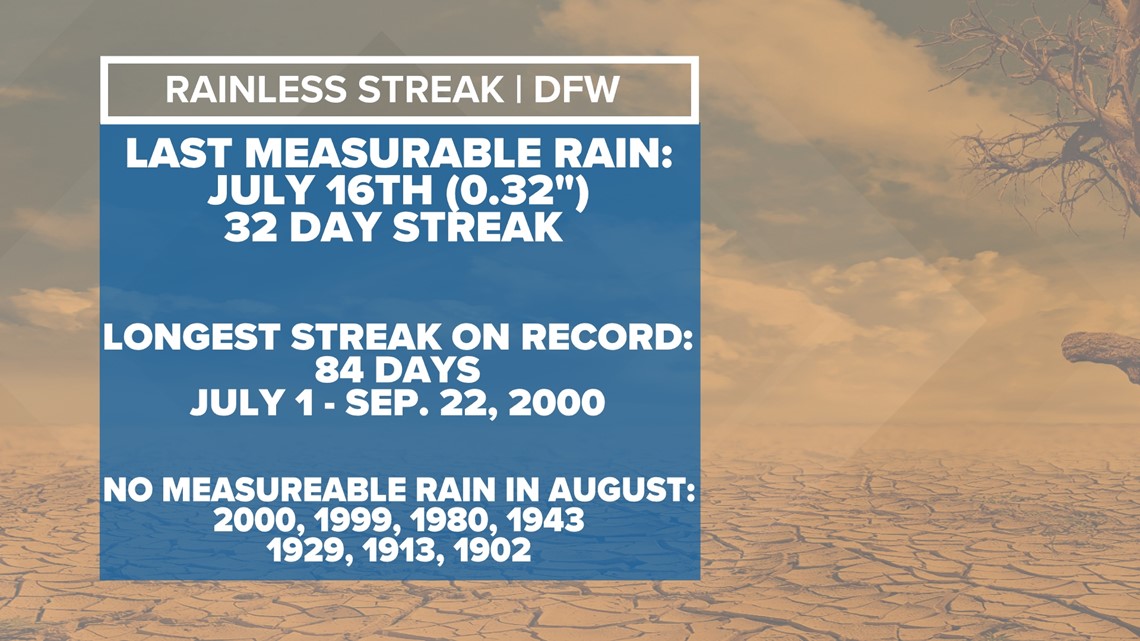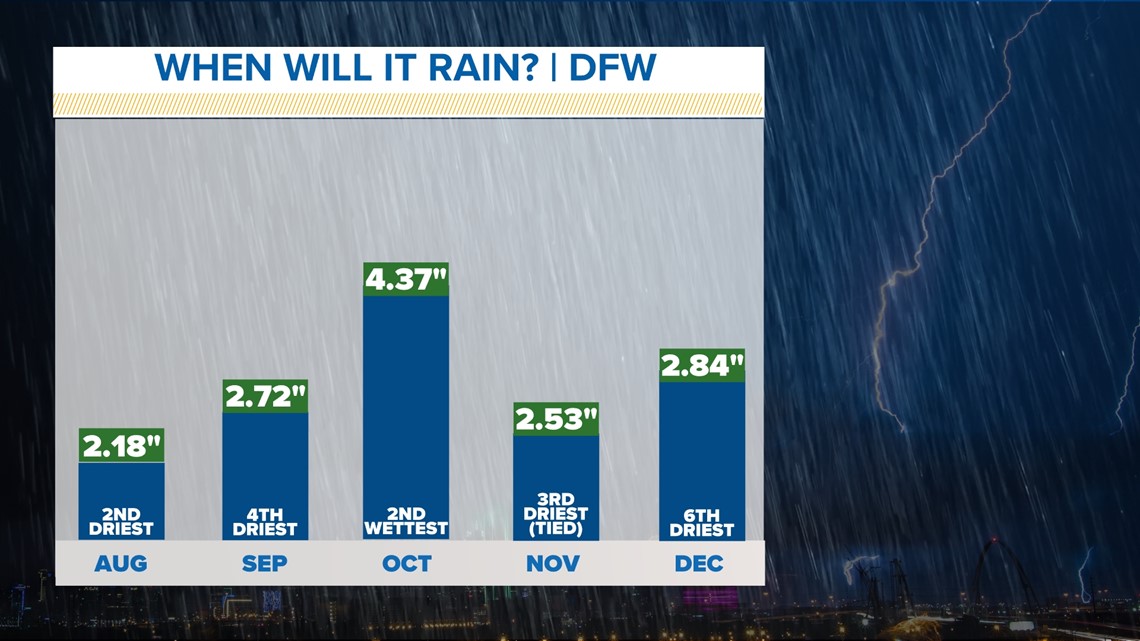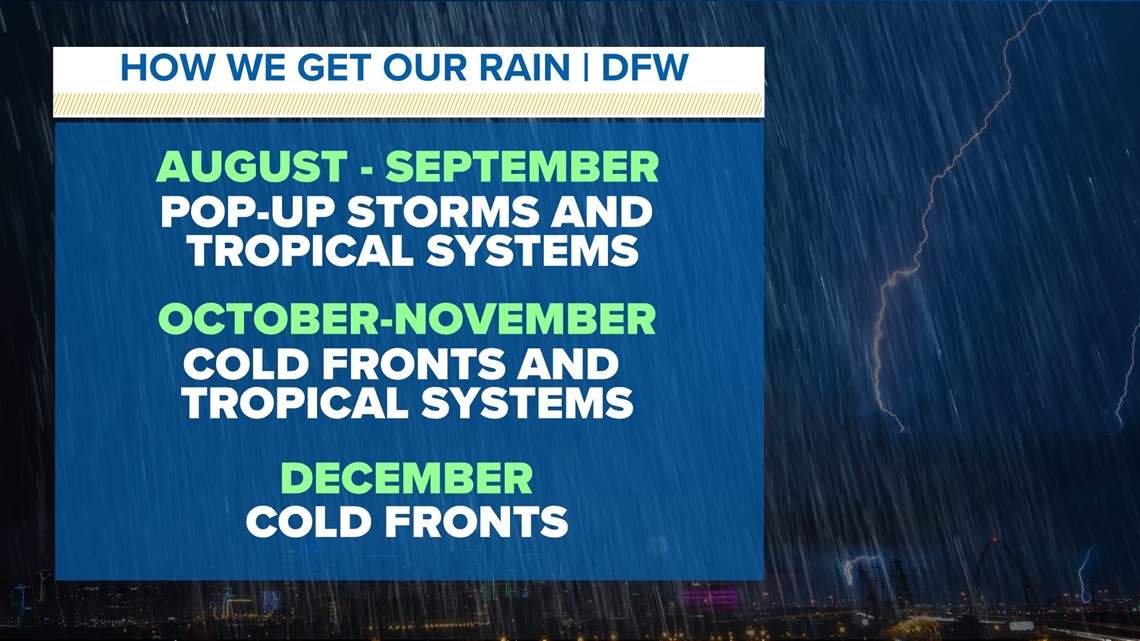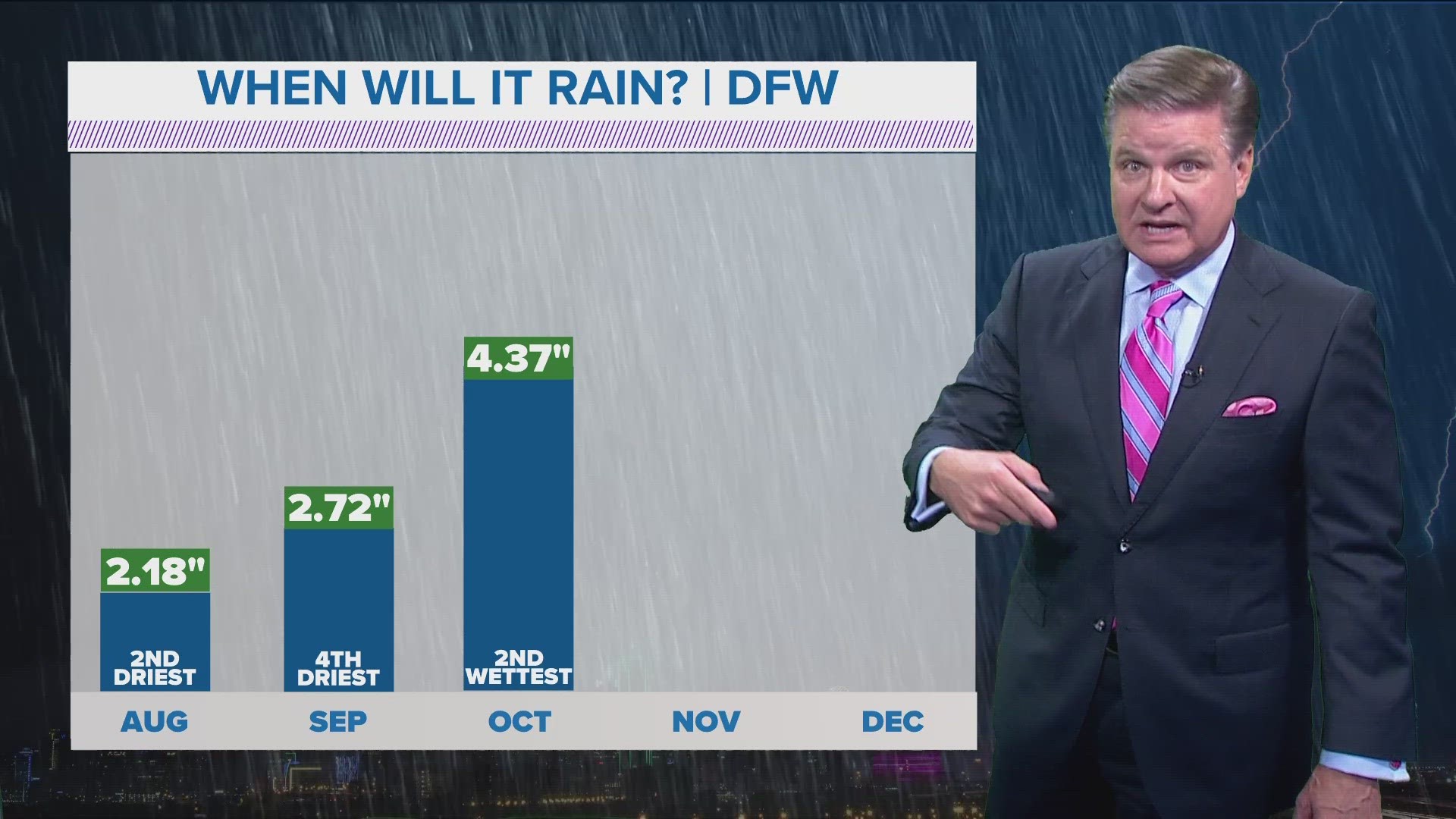DALLAS — Where is all the rain? Lately, not in North Texas. The last measurable rainfall DFW recorded was on July 16. As of the writing of this article, that brings the streak to a total of 32 days.
There have been years when August has reported no measurable rain. The last time this happened was August 2000.


Climatologically, August is the second driest month of the year with an average rainfall of 2.18 inches. Rainfall generally picks up in September and more in October. Lower rainfall totals generally return for November through the early parts of the year.


How does North Texas get its rain?
It depends on the time of the year. During August through September, North Texas gets rain from pop-up, summertime storms. This brings more scattered activity. However, this is highly limited if an area of high pressure is strongly influencing our weather pattern (example: August 2023).
Another way North Texas gets rain during this time would be tropical systems. This has the capability of bringing more widespread, soaking rain. The Atlantic, so far, has been quiet.


Tropical systems are generally rain-makers for Texas through late October. The Atlantic Hurricane Season is from June 1st through Nov. 1.
October through the end of the year, our primary source for rain comes front cold fronts. During this time, our seasons are transitioning from the hot, summer months to the cold, winter months. This is why more fronts are sent either from the Pacific or from the north. These fronts interact with moisture from the Gulf and both work together to bring additional rain.
October is commonly referenced as a secondary severe weather season for North Texas. This is because of the frequency of fronts moving through.

